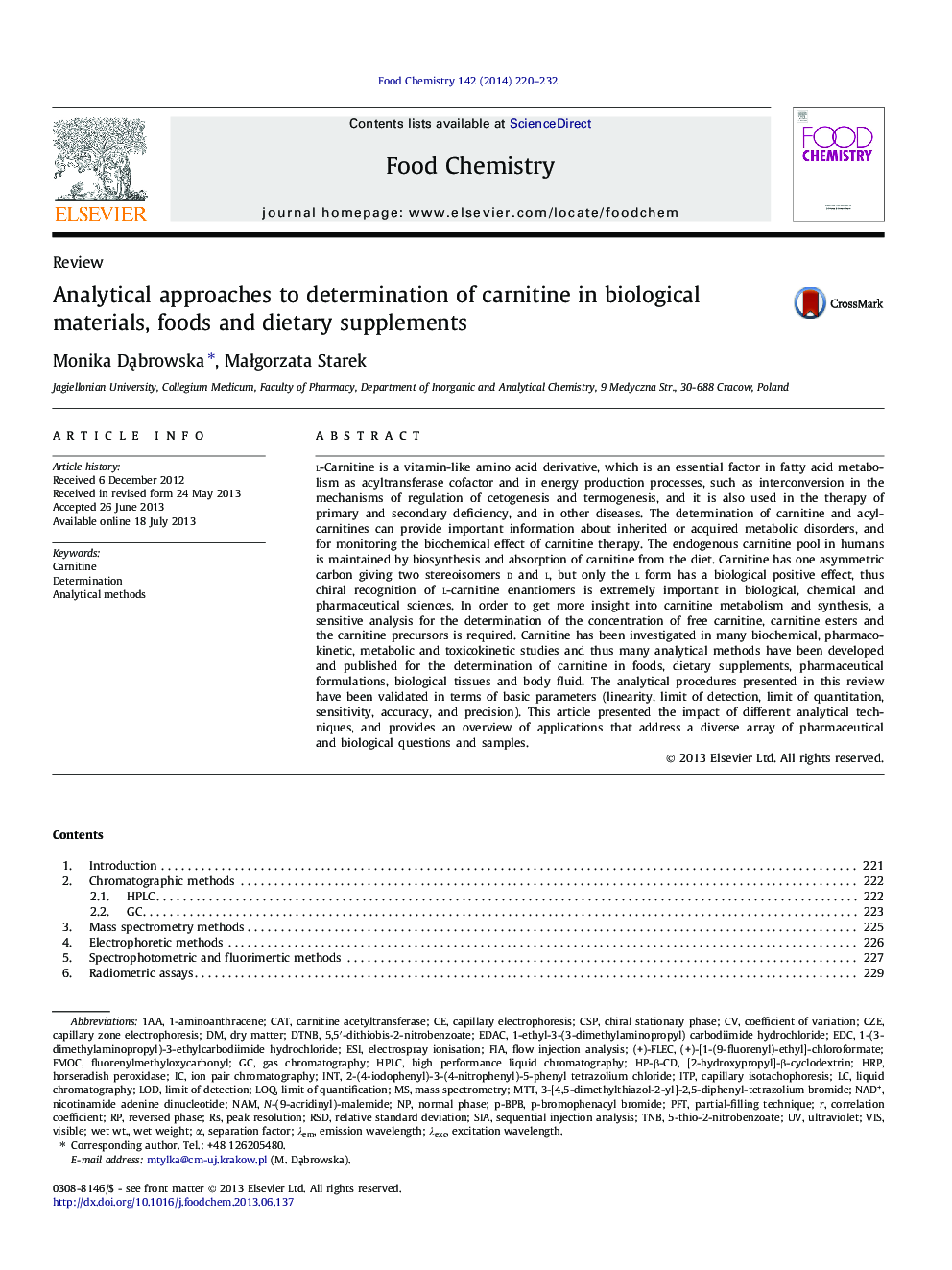| Article ID | Journal | Published Year | Pages | File Type |
|---|---|---|---|---|
| 7601455 | Food Chemistry | 2014 | 13 Pages |
Abstract
l-Carnitine is a vitamin-like amino acid derivative, which is an essential factor in fatty acid metabolism as acyltransferase cofactor and in energy production processes, such as interconversion in the mechanisms of regulation of cetogenesis and termogenesis, and it is also used in the therapy of primary and secondary deficiency, and in other diseases. The determination of carnitine and acyl-carnitines can provide important information about inherited or acquired metabolic disorders, and for monitoring the biochemical effect of carnitine therapy. The endogenous carnitine pool in humans is maintained by biosynthesis and absorption of carnitine from the diet. Carnitine has one asymmetric carbon giving two stereoisomers d and l, but only the l form has a biological positive effect, thus chiral recognition of l-carnitine enantiomers is extremely important in biological, chemical and pharmaceutical sciences. In order to get more insight into carnitine metabolism and synthesis, a sensitive analysis for the determination of the concentration of free carnitine, carnitine esters and the carnitine precursors is required. Carnitine has been investigated in many biochemical, pharmacokinetic, metabolic and toxicokinetic studies and thus many analytical methods have been developed and published for the determination of carnitine in foods, dietary supplements, pharmaceutical formulations, biological tissues and body fluid. The analytical procedures presented in this review have been validated in terms of basic parameters (linearity, limit of detection, limit of quantitation, sensitivity, accuracy, and precision). This article presented the impact of different analytical techniques, and provides an overview of applications that address a diverse array of pharmaceutical and biological questions and samples.
Keywords
λexc3-[4,5-dimethylthiazol-2-yl]-2,5-diphenyl-tetrazolium bromideTNBHP-β-CDEDACFluorenylmethyloxycarbonylFMOCPFTSIACZEintDTNBHRPCATCSPFIAp-BPBλemLOQESIRSDEDC1-(3-dimethylaminopropyl)-3-ethylcarbodiimide hydrochloride1-Aminoanthracene1-ethyl-3-(3-dimethylaminopropyl) carbodiimide hydrochloride5-thio-2-nitrobenzoateCapillary isotachophoresisMTTNAD+p-Bromophenacyl bromideVIsUltravioletCapillary zone electrophoresisCapillary electrophoresisrelative standard deviationSequential injection analysisFlow injection analysisDeterminationLOD یا Limit of detectionAnalytical methodsCoefficient of VariationCorrelation coefficientEmission wavelengthExcitation wavelengthMass spectrometrySeparation factorchiral stationary phaseNormal phasereversed phaseVisibledry matterlimit of quantificationlimit of detectionNAMnicotinamide adenine dinucleotideITPwet weightPeak resolutionHorseradish peroxidaseCarnitineCarnitine acetyltransferaseIon pair chromatographyliquid chromatographyhigh performance liquid chromatographyHPLCGas chromatographyelectrospray ionisation
Related Topics
Physical Sciences and Engineering
Chemistry
Analytical Chemistry
Authors
Monika DÄ
browska, MaÅgorzata Starek,
